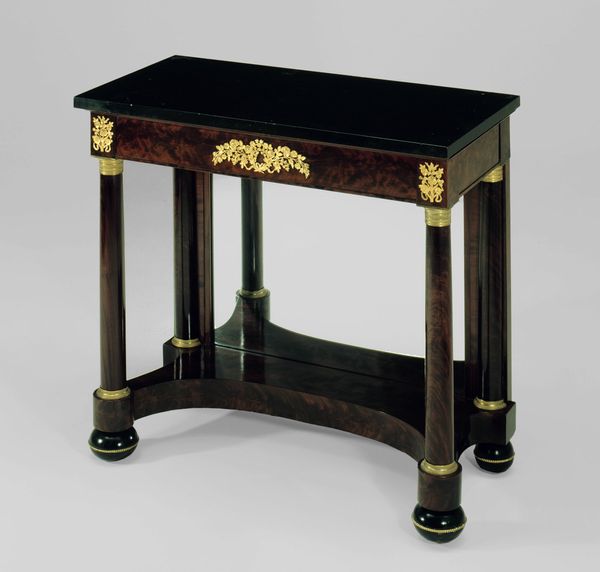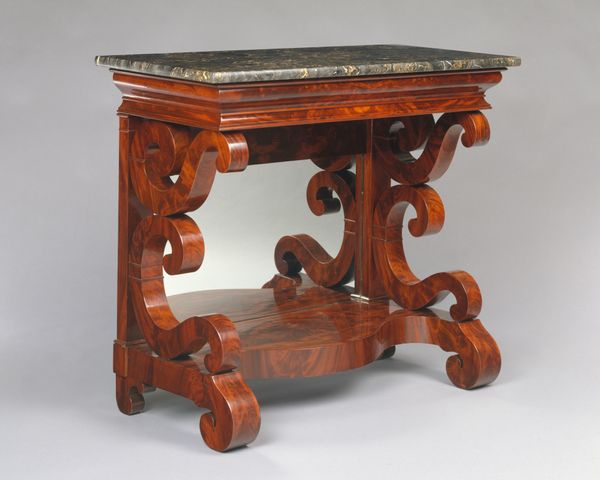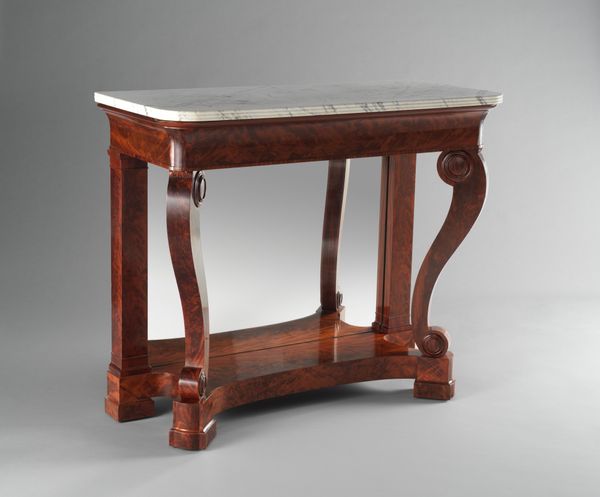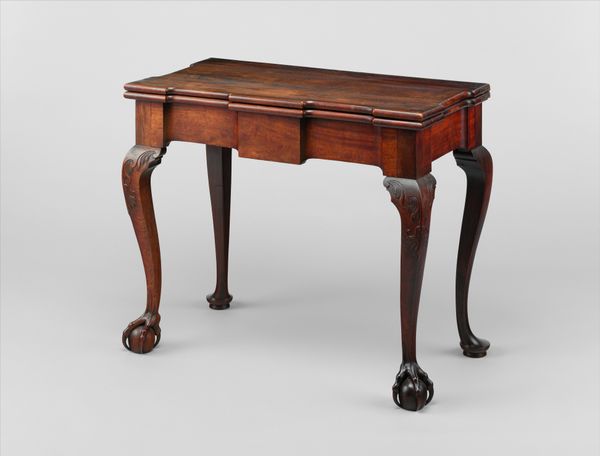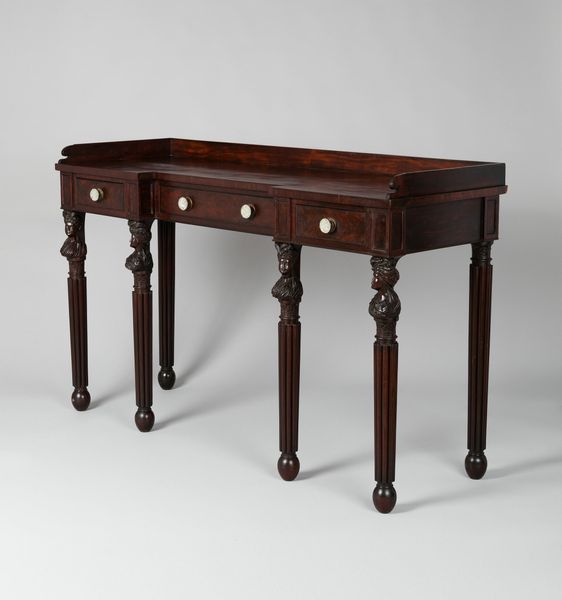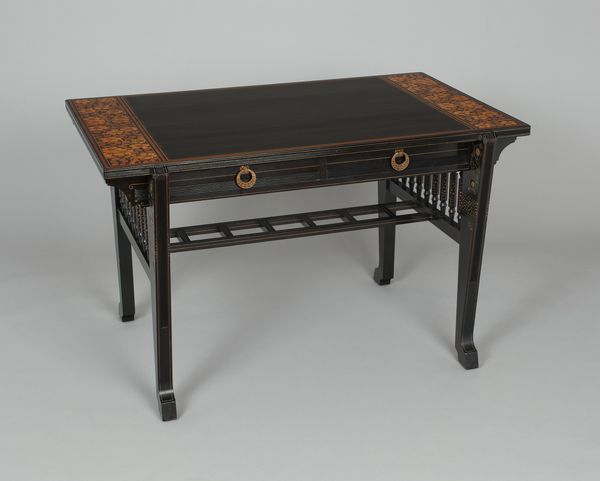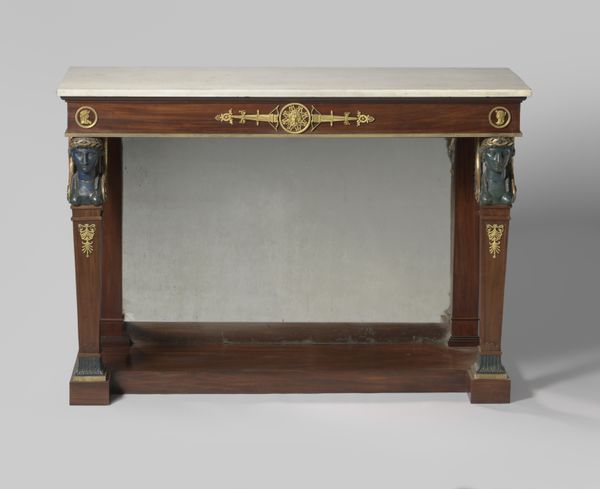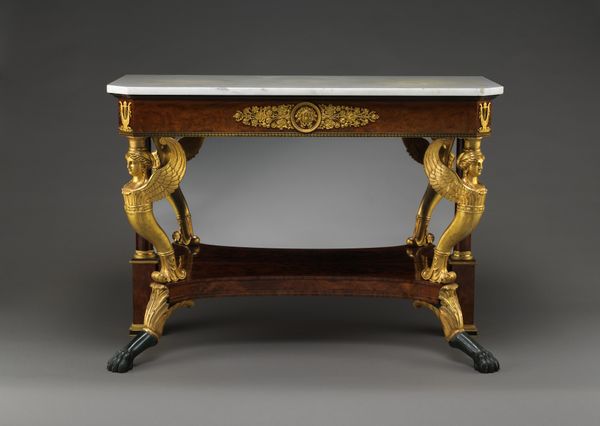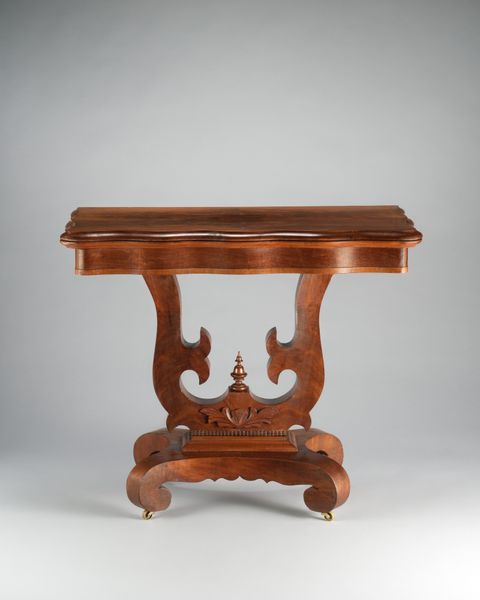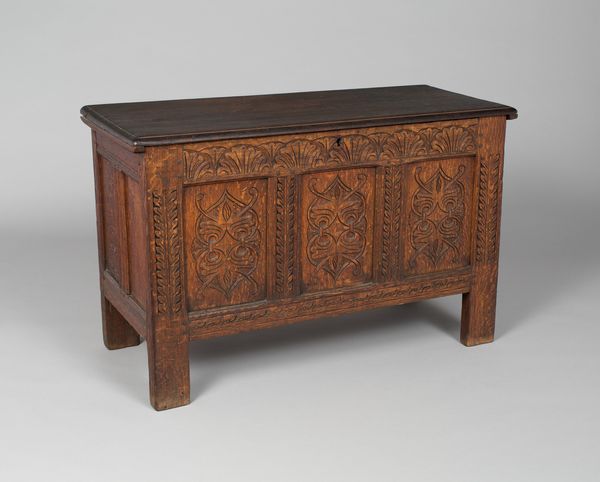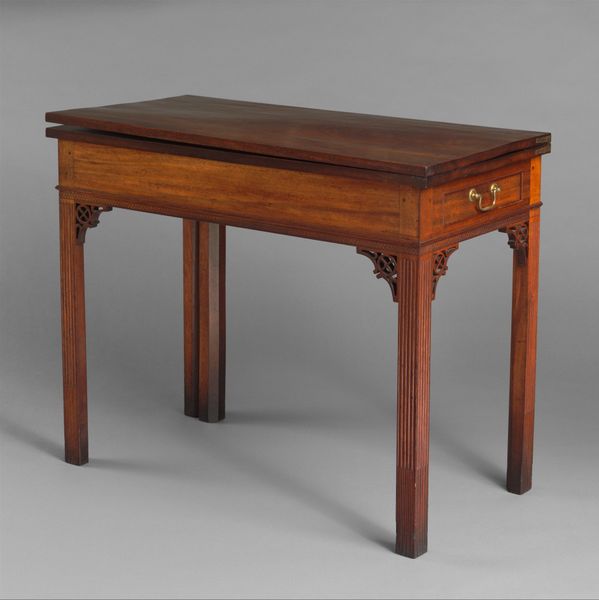
metal, wood, gilding, marble
#
metal
#
furniture
#
united-states
#
wood
#
gilding
#
decorative-art
#
marble
Dimensions: 36 9/16 × 42 × 20 1/4 in. (92.9 × 106.7 × 51.4 cm)
Copyright: Public Domain
Editor: This striking Pier Table in the Neo-Classical taste, crafted by Duncan Phyfe sometime between 1815 and 1825, blends wood, marble, metal, and gilding to impressive effect. I’m drawn to how it reflects status and wealth with such direct references to Greek and Roman forms. What’s your interpretation? Curator: Well, it’s a potent reminder of how powerful groups throughout history use artistic movements to legitimize their position. Neo-classicism in the United States wasn’t just about aesthetic preference; it became a visual language of the elite. It associated them with the perceived stability and virtues of past empires. Consider the deliberate choices Phyfe made: what statements are made through the marble, the gilded details, and the strong symmetry? Editor: So it's about communicating power, not just about beautiful design? The symbolism seems to work on different levels - the columns, the animalistic claw feet... I see a kind of architectural might, adapted to domestic settings, so that even private life becomes this grand spectacle. Curator: Precisely! Phyfe's workshop catered to a burgeoning merchant class eager to display its sophistication and newly acquired power. Who did he expect to own such a piece, and where in their home would it have been placed? It served as a backdrop for their lives, reflecting aspirations and consolidating cultural capital. How would a piece like this affect interactions within the household, or with guests? Editor: Now I see the pier table not just as furniture, but as a deliberate tool for creating an image. Thinking about it historically really gives you a new perspective. Curator: And considering the context, it serves to remind us how artifacts themselves shape social roles and power dynamics. Editor: Definitely makes you wonder about the messaging embedded in the objects around us today!
Comments
No comments
Be the first to comment and join the conversation on the ultimate creative platform.
